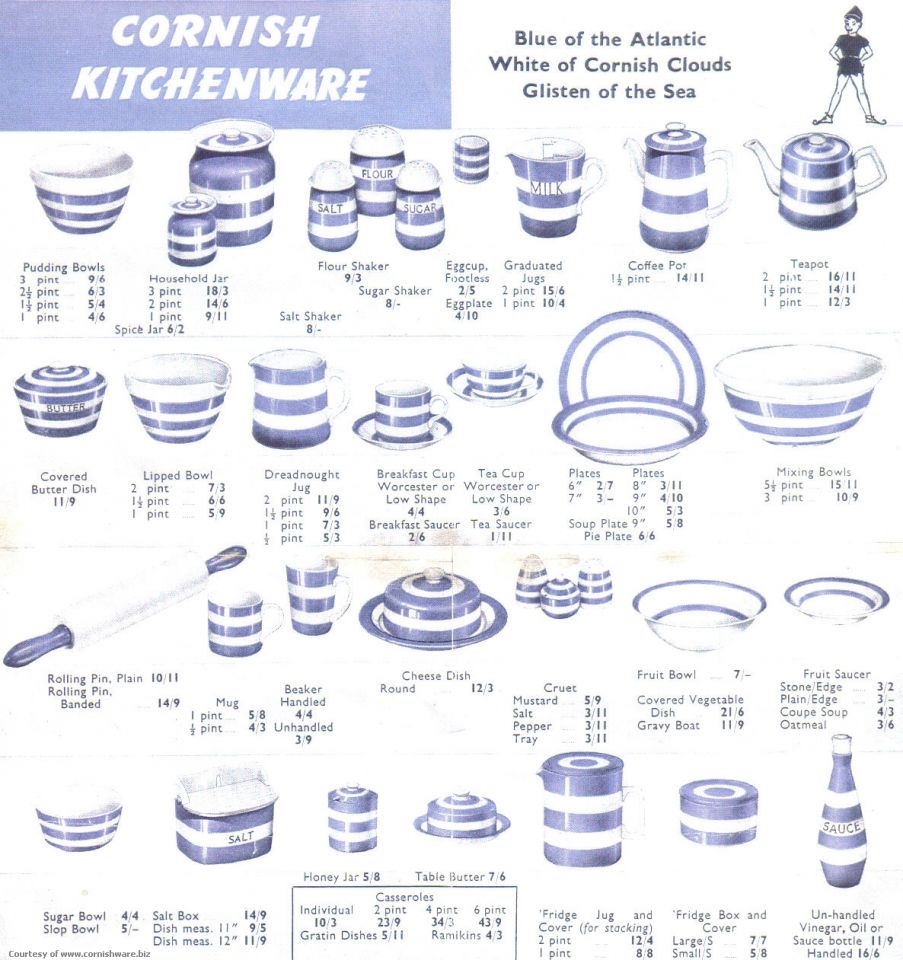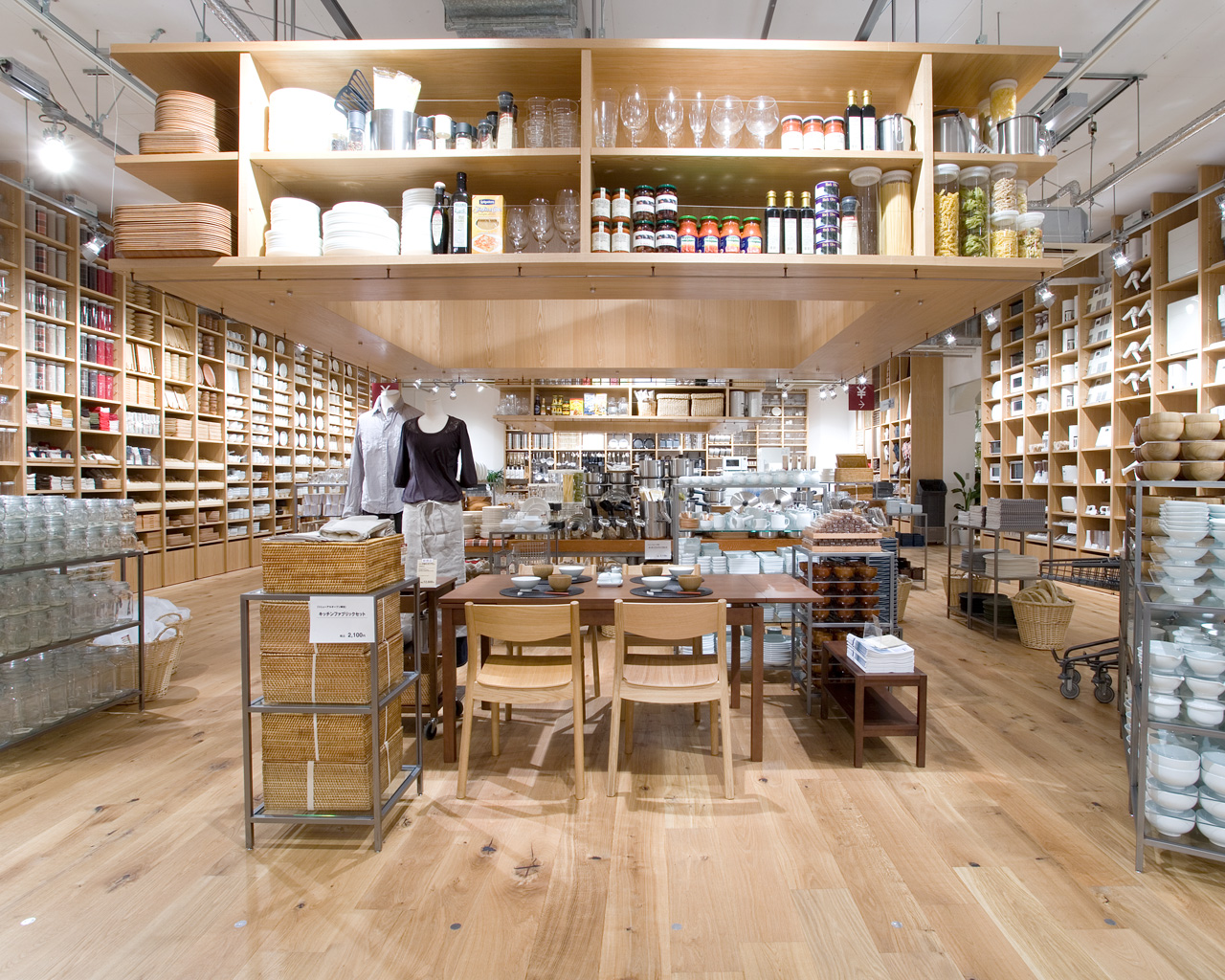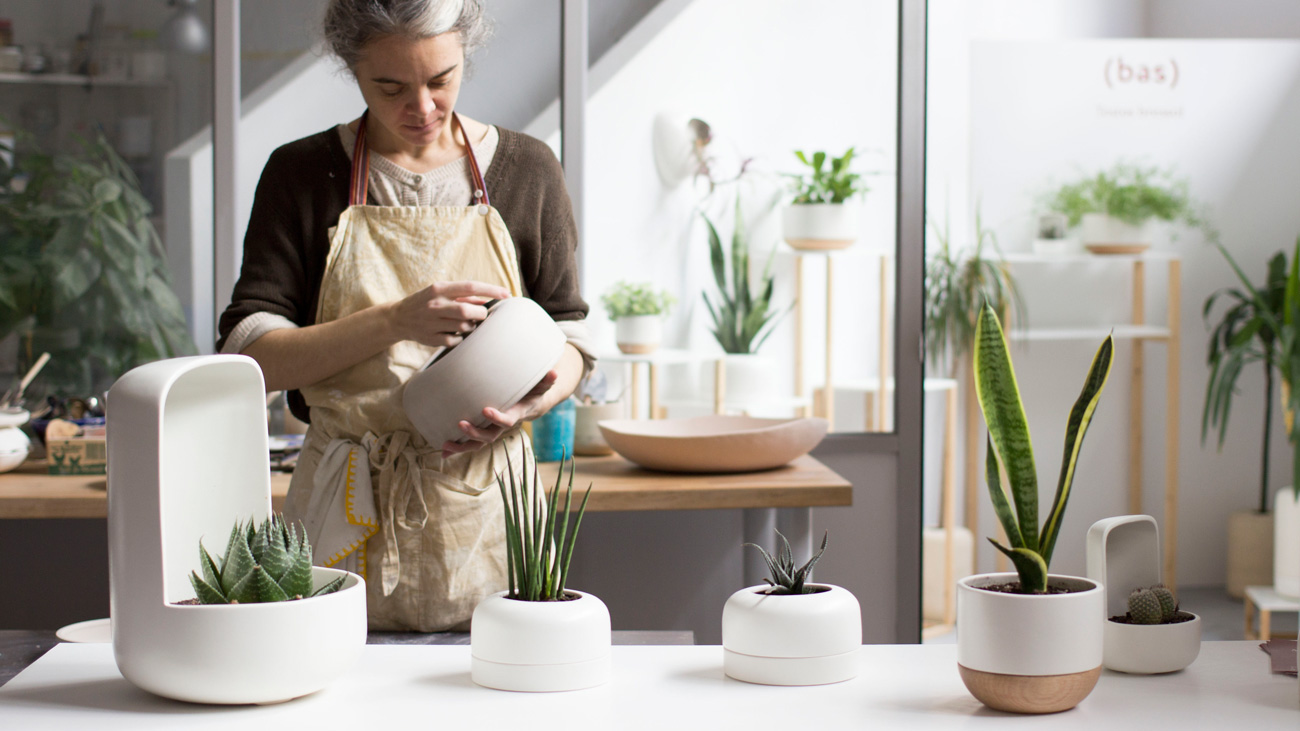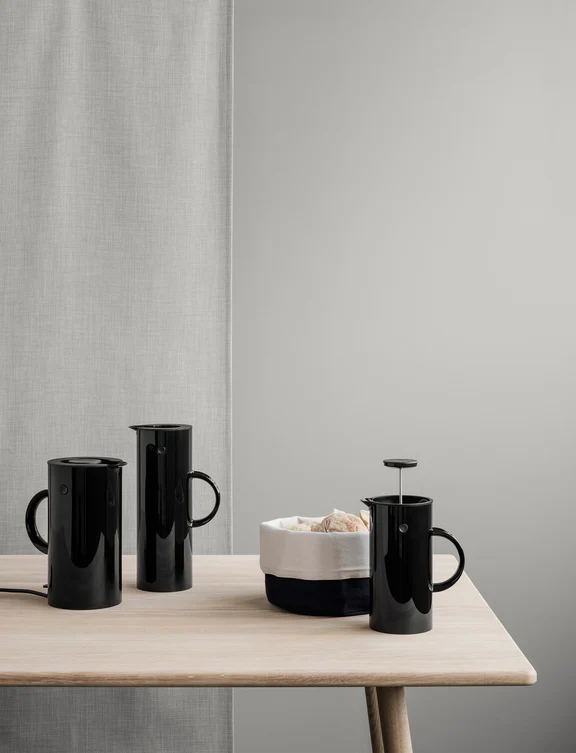Cornish Kitchenware
This blue and white earthenware tableware made its first appearance in the catalogue of the T.G. Green & Co.The company was founded in 1927 in Derbyshire, England, in 1927. It was a difficult time, and Mr. Green, worried about the future of his factory, decided to create this crockery so that his lathe operators could get down to work, so that the crisis would catch them at work.

This tableware was born with two clear intentions: On the one hand, to distinguish itself from everything produced up to that time, as it was manufactured following a layering process that allowed that by lifting strips of the first blue layer, the white ceramic would appear underneath, crisp and clear. On the other hand, it became a standard product in English middle-class kitchens, which was the case for eight decades.


In the beginning, the collection consisted only of jugs and vessels, but soon expanded to include plates, teapots, cups... The use of the term "Cornish" is a blatant marketing strategy to evoke country life, and the blue and white stripes are the fault of a turner who was reminded of the blue sky and the white foam of the Cornish waves.

From the first batch, Cornish crockery became an English classic, like Wellington boots or the Mini, and today avid hunters on Ebay are bidding for the first originals, at exorbitant prices since the factory closed in 2007.

To Judith Onions, a graduate of the Royal College of Art, we owe the precious variations on the classic, such as the Domino series or the new colour palette (black, pink, yellow, grey...), which guaranteed and prolonged its commercial success right up to the present day.


Yes, to the pleasure and delight of many, the Cornishware is being produced and marketed again. The packaging deserves a special mention, as each piece of the series comes packaged in a box so beautiful that it is worth opening it, especially when you know that what it contains has the value of handmade things, manufactured one by one following the same process as in Victorian times, although today we can personalise our pieces or they are adapted for use in the dishwasher, microwave or air oven... One thing does not take away the other, does it?







